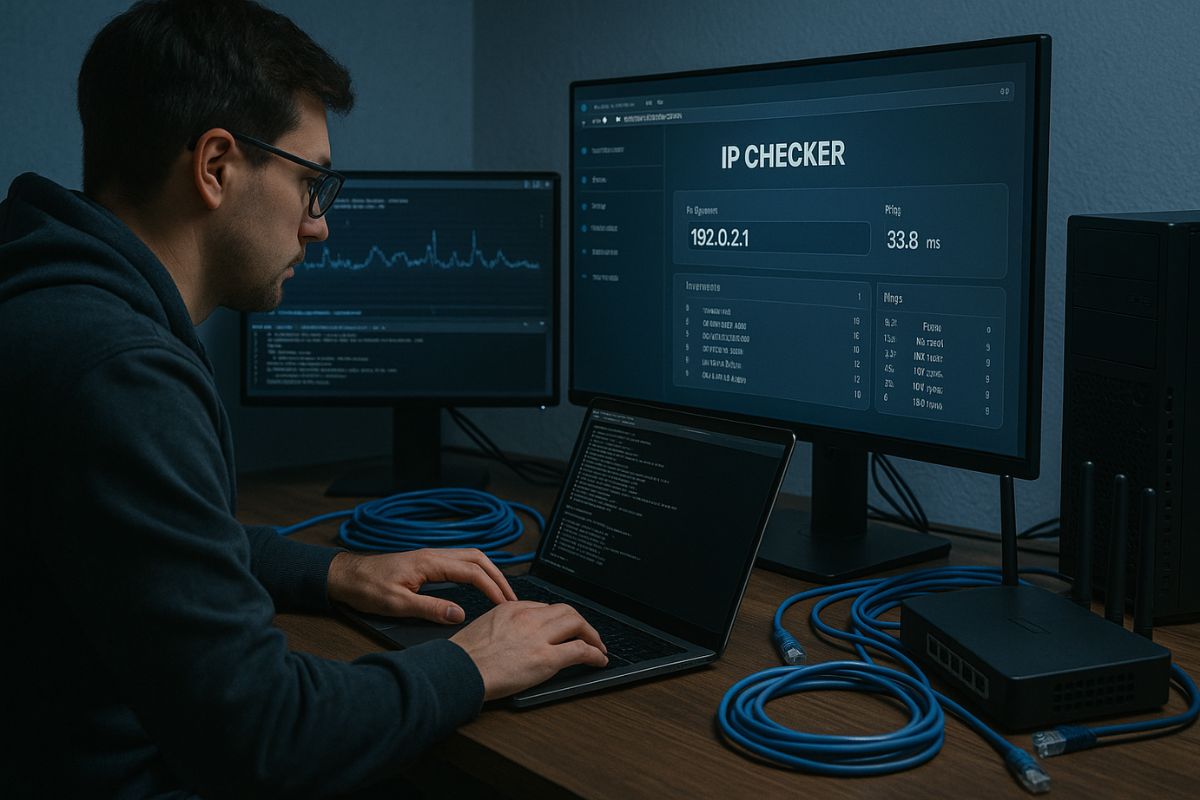When something goes wrong with a network, the first instinct is often to restart the router or blame the connection. But without real data, troubleshooting turns into guesswork. That’s where a real-time IP checker can help. It gives you live visibility into your current IP, helps track changes, and can point out where the issue might actually be.
For developers, system admins, or anyone managing web-based tools, knowing your public IP and monitoring it in real time adds a layer of control. Whether you’re dealing with geolocation bugs, proxy issues, or cloud service whitelists, a real-time IP checker turns questions into answers.
What This Article Covers
This post explores how real-time IP checkers are used in troubleshooting network issues. You’ll see how they help in diagnosing dynamic IP changes, identifying proxy routing problems, and confirming geolocation mismatches. You’ll also learn how this tool fits into both local testing and broader DevOps workflows.
It’s about more than just seeing your IP. It’s about having a clear view of the network environment your apps, services, or users rely on.
What a Real-Time IP Checker Actually Does
At its core, an IP checker tells you your public IP address. But real-time tools take this further. They update instantly, showing when your IP changes—like during a router reset, VPN switch, or mobile data handoff.
Some tools also include extra details like city, country, internet provider, and IP version (IPv4 or IPv6). This data can reveal a lot about how your connection is routed and where it might be breaking down.
For remote workers or teams using multiple environments, a real-time IP checker makes it easier to track where a request is coming from. If a server is locked to specific IPs, for example, you’ll know immediately whether access should be allowed or denied.
Spotting Unexpected Changes
Dynamic IPs can change without warning. Most home networks rotate IPs regularly unless you’ve paid for a static one. If you’re testing a site that relies on IP whitelisting or trying to SSH into a server, a sudden change in your IP can block access until it’s updated.
A real-time checker alerts you when this happens. By keeping a tab open, you’ll see the shift and know to re-authenticate or update access lists. This also helps when running long tests or monitoring services from a home connection that isn’t static.
VPNs and proxies add another layer. If a tool reports a different IP than expected, it could mean your tunnel is broken, your proxy isn’t active, or you’re leaking DNS traffic. A quick look at your IP confirms whether you’re protected or exposed.
Verifying Location-Sensitive Behavior
Some apps behave differently based on location. Streaming platforms, for example, show different libraries depending on country. Cloud services may route requests differently based on region. Even analytics tools can mislabel user data if IPs are misread.
If you see your IP geolocated incorrectly, you can adjust your proxy, VPN, or DNS settings. Real-time tools help validate that your setup matches what your app expects.
This is also useful for testing behavior across regions. Switching VPN servers and watching your IP update lets you simulate how the app responds in different parts of the world without leaving your desk.
Checking Firewall Rules and Restrictions
In environments with strict firewall rules, knowing your IP matters. Access is often granted based on public IP ranges. If a request is being blocked, an IP checker helps confirm whether the current IP is on the allowlist.
This comes in handy during infrastructure rollouts, staging deployments, or working from new locations. Instead of wondering why your database isn’t connecting, check your IP and confirm it’s in the access rules.
For DevOps teams managing multi-cloud setups, IP-based rules are still common. Being able to confirm source IPs in real time makes troubleshooting faster and less frustrating.
Watching for VPN or Proxy Failures
When you rely on VPNs to route traffic securely or through a specific region, a real-time IP checker is your first line of defense. If the IP doesn’t match what you expect, something in the chain is broken.
This could be a disconnected tunnel, a proxy fallback, or a misconfigured browser extension. Seeing the wrong IP means you can fix the issue before traffic gets logged or handled the wrong way.
Some tools even show whether your connection supports IPv6. If you’re debugging dual-stack support or running into weird errors with APIs that prioritize IPv6, this info helps clarify what’s really happening under the hood.
Local Testing Without Surprises
Developers often forget that local networks behave differently than production. DNS resolution, NAT behavior, and outgoing IP addresses can all vary between environments.
Using a real-time IP checker during local development helps ensure that requests are leaving from the IP you think they are. If your app or API is logging strange traffic or rejecting requests, checking the IP gives you one more clue to solve the puzzle.
This is especially useful for apps using location-based content, rate-limiting by IP, or authenticating requests based on origin. Knowing your IP means fewer assumptions and faster debugging.
Simple but Powerful
The best part about a real-time IP checker is that it’s easy. No complex setup, no installation, just a quick way to get answers. For solo developers, it offers peace of mind. For teams, it reduces back-and-forth when troubleshooting issues tied to location, routing, or security.
Some developers even add a custom IP checker page to internal dashboards. It’s a simple feature that ends up being surprisingly useful, especially when testing from different devices, networks, or office locations.
Troubleshooting networks can feel like chasing shadows. But when you have real-time visibility into your IP, the path forward becomes clearer. Whether you’re solving access issues, verifying behavior across regions, or just checking if your VPN is working, an IP checker gives you the clarity you need to keep things running smoothly.

No Responses